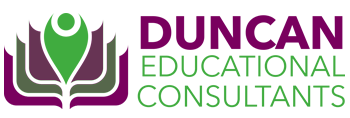The best educator sees each child as their own. Their work should aim to settle the internal storms brought on by normal child development, while continually encouraging students toward a growing edge that may be uncomfortable. To that end, educators must study both how students learn and how to create a space that allows learning to take place. Developmental psychology and environmental psychology theories speak to the educator’s quest to create successful, standards-based curriculum, as the success of the curriculum is directly related to the students receiving instruction and the environment in which the student received the curriculum. In order for a student to be properly instructed, an educator must at least have a working knowledge of what should be expected of a student at a particular time and what inputs contribute to the growth of the student.
Piaget, Bandura, Watson and Skinner significantly contributed to studies in behavioral theory, which contends, an individual is contrasted to an apparatus where the surroundings cause a behavior that may or may not be influenced by the actual will of an individual (Huff, 1996). The Organismic view of psychology affirms that transformation is intrinsic, but is predisposed to modification based on preferences and environment. In this theory, people, and for curricular purposes, students, change because they are active organisms and are led by their personal volition. Psychoanalysis, as it relates to learning development and curricular instruction offers that students may be in a consistent struggle between internal impulses resisting the confines set by society. Kohlberg and Gilligan, though diverging on validity and relevance of context agree the identity crises, which refers to the perplexity and anguish an individual encounters when they have no sense of self is detrimental to development, and therefore, learning (Kakkori & Huttenen, nd). Learning, then, is a direct reflection of the interaction of one’s personal psycho-social development and one’s environment.
A child’s learning environment includes observation and schema, awareness, ideal surroundings, contribution, and environmental pressures and management of such pressures. Schema is the way in which information is stored in a student’s brain. This schema, or mind map causes an individual to summon experiences with observation of current dealings and emotions. Mental maps control or construct the manner in which individuals recognize and consider the environment. If an educator assesses how a student relates to their environment, said educator may manipulate and enhance the student’s ability to be aware of one item or event, in favor of another. To accomplish the lofty task of educating, a teacher must create a new context for learning that mimics ideal surroundings. These surroundings feed the psycho-social need for comfort and security. Teachers are responsible for restoring and creating ideal surroundings seem to boost a sense of well-being in students. Successful teaching, then, must not include the standards necessary for academic success, but must also meet the student’s need to determine how she/he will learn and how they will demonstrate what they have learned. Dr. Maria Montessori and her subsequent curricular style is most successful in combining the two. The best of schools replicate her philosophy in varying ways across disciplines.
The Montessori Method is constructed around a child’s developmental requirements for educational freedom within certain limits (Montessori, 1964), however, environment contributes to whether a student will be able to be comprehensively engage with a myriad of materials and learning experiences. While students require teachers as facilitators of education, the student is responsible for his or her own reaction to the exposure.
In assessing traditional public, public charter, and independent schools, it can be concluded that students thrive when they are respected as differing from adults, and as individuals who diverge from each other. The student has a unique understanding and cerebral ability to understand and learn from his or her environment that is quantitatively and qualitatively different from those of adults. The most important years of an individual’s development are one through six years of age because it is thought that unconscious learning is brought to the conscious level. Students possess a keen love and need for deliberate work. When an educator determines what deliberate work looks like for different students, said student will explore for the sake of the activity, not for a grade. It is this work for the sake of the act itself which helps the child individual to realize their most significant objective: the development of their mental, physical, and psychological powers (Lilliard 1972). That is, the proper educational environment may prevent the identity crises argued by Erikson and Gilligan.
A key to maintaining individual involvement in learning is in understanding learning style choices, which can manipulate a student’s performance (Birkey & Rodman 1995; Dewar 1995; Hartman 1995). It has also been shown that adjusting teaching materials to meet the needs of a variety of learning styles benefits all students (Agogino & Hsi 1995; Kramer-Koehler, Tooney & Beke 1995). Birkey & Rodman submit that, just as there are “striking differences in the way people learn and process information…there are significant differences in how learning styles are defined and measured (1995).” It is important that an instructor is at least basically aware of the different learning styles within his/her audience and how instruction within a purposeful environment, contributes to student success.
References
Agogino, A., & Hsi, S. (1995). Learning style based innovations to improve retention of female engineering students in the Synthesis Coalition. Retrieved from http://fairway.ecn.purdue.edu/asee/fie95/4a2/4a21/4a21.htm
Birkey, R., & Rodman, J. 1995. Adult learning styles and preference for technology programs.
Erikson, E. (1950). Childhood and society. New York: W W Norton & Company.
Huff, D. (Sept-Nov, 1996) Lecture notes. Ohio University Eastern.
Kakkori, L., Huttunen, R. (n.d.). Gilligan-Kohlberg controversy and preliminary conclusion. http://eepat.net/doku.php?id=gilligan_kohlberg_controversy_and_preliminary_conclusion.
Kramer-Koehler, P., Tooney, N., & Beke, D. (n.d) The use of learning style innovations to improve retention. Retrieved from http://fairway.ecn.purdue.edu/asee/fie95/4a2/4a22/4a22.htm
Liliard, P. (1972). Montessori: a modern approach. Schocken Books
Montessori, M. (1964). The montessori method. Schocken Books.
